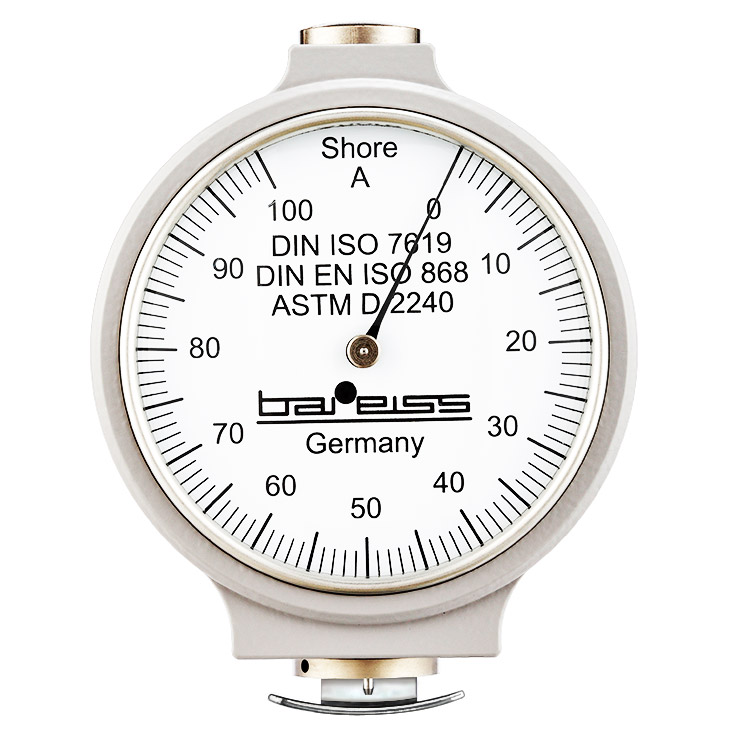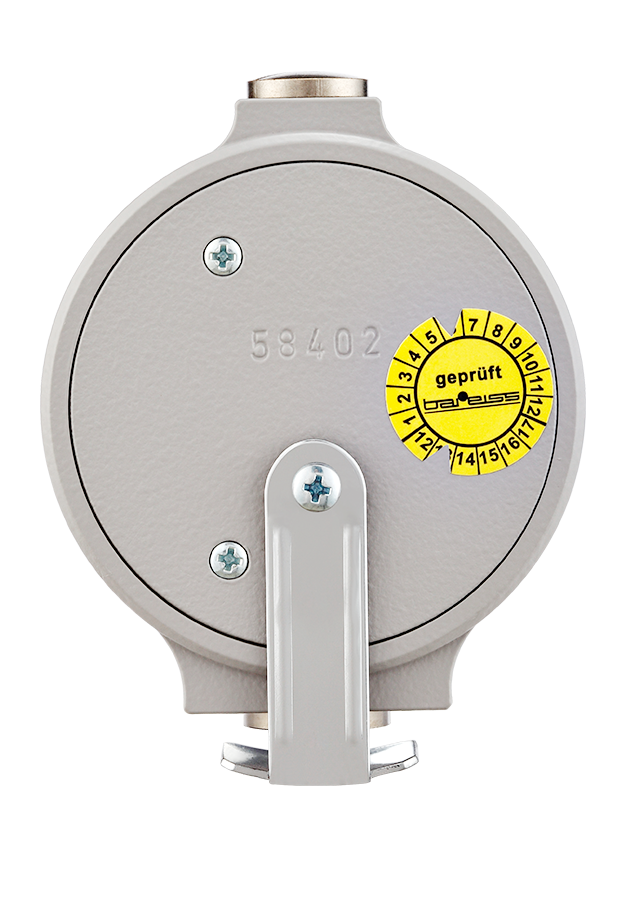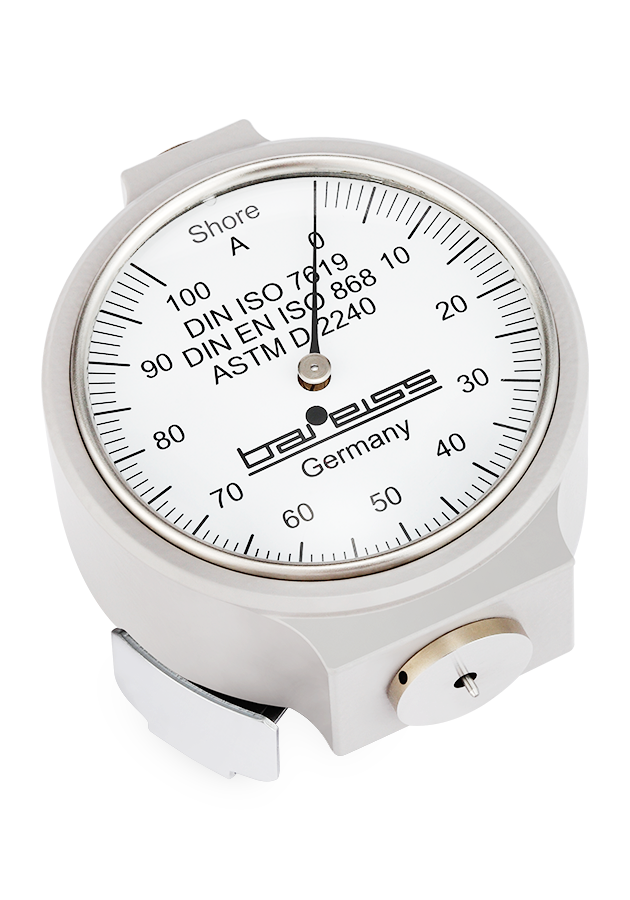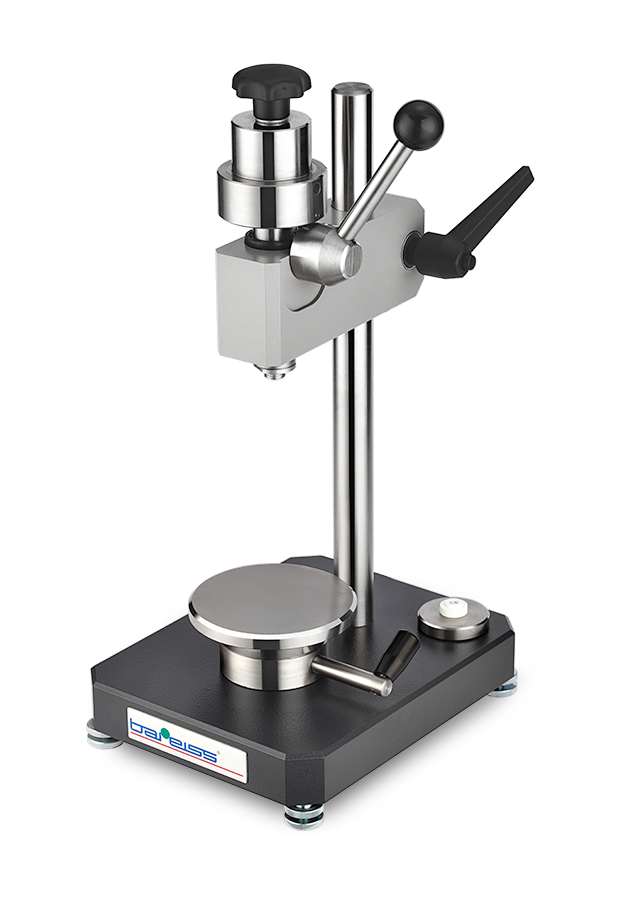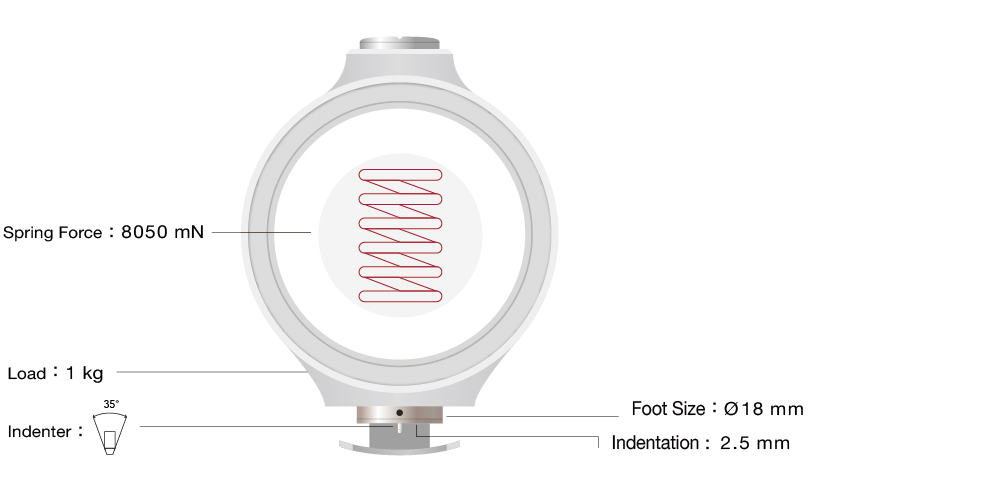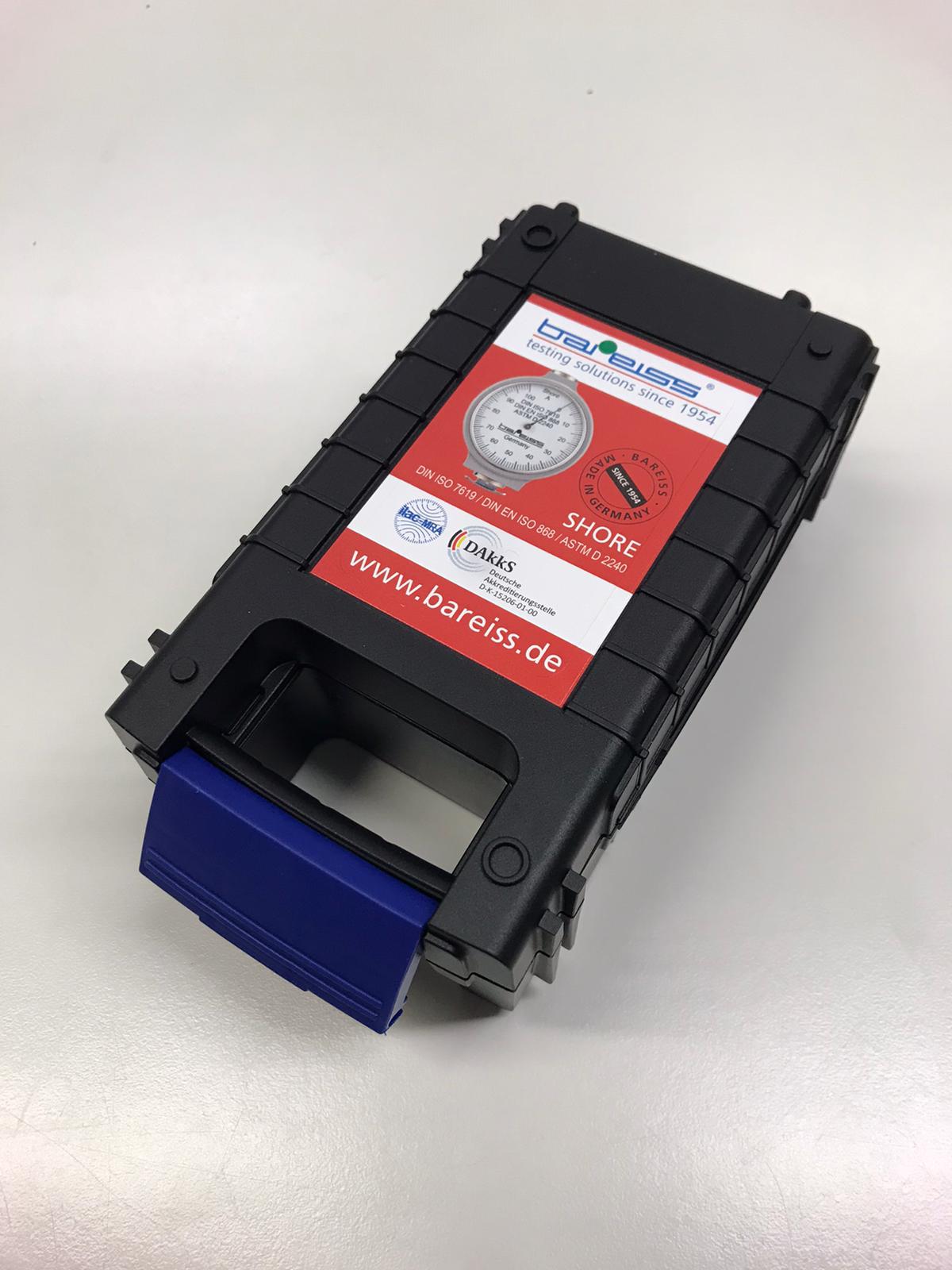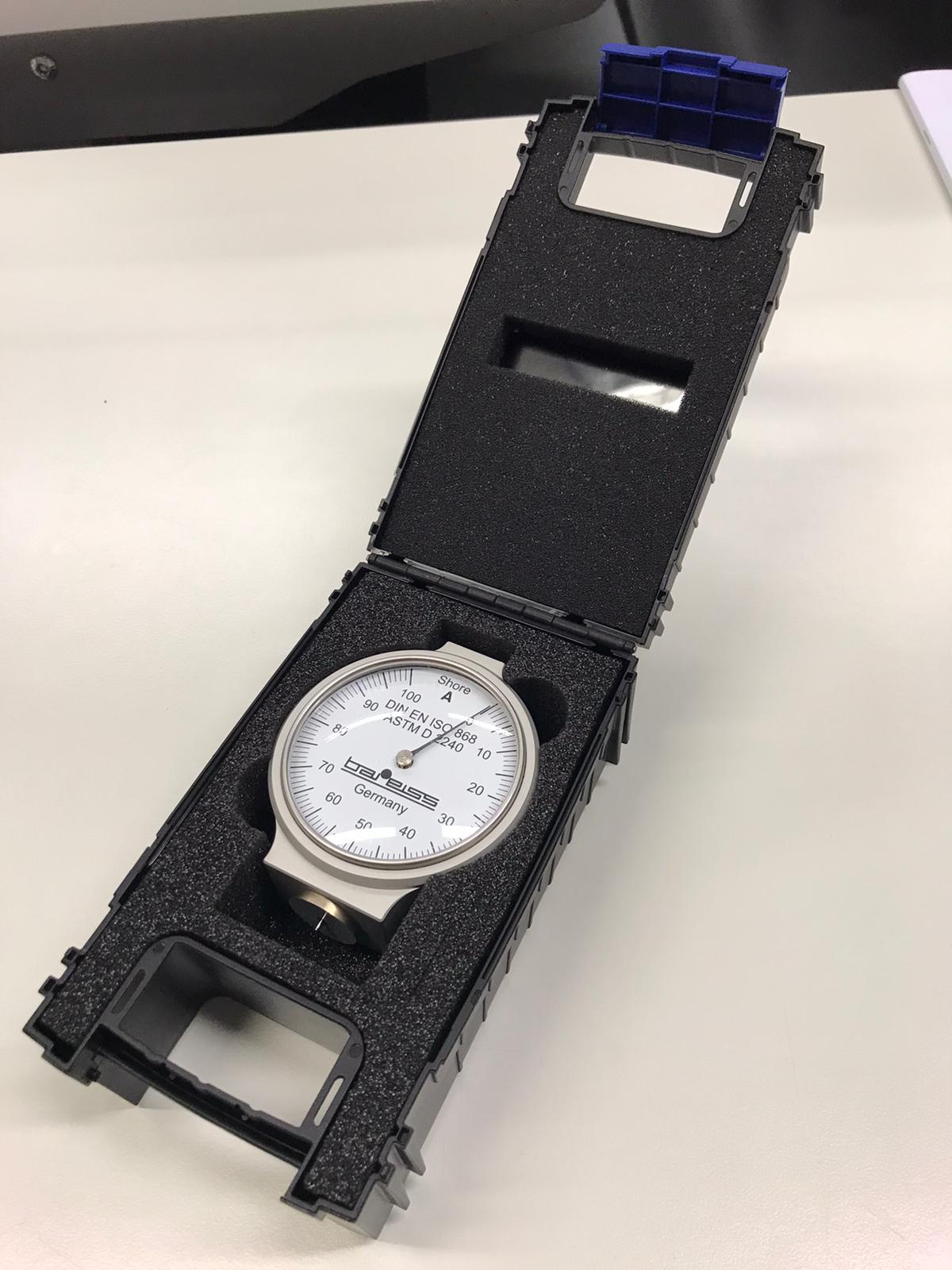Rubber Testing Equipment
Standards
DIN ISO 7619, DIN EN ISO 868, ASTM D 2240, BS 903 Part. A 26, NF T 51-174



Certified



Description
This Germany manufactured system has been the global landmark of Shore hardness testing systems since 1954. With ever enhanced ergonomic design, the HP Shore Hardness Tester is both visually appealing and precise rubber and plastic testing system as it has been for nearly 50 years. The HP system is world renowned best seller hardness tester with over 100,000 units sold to satisfied clients globally. It is considered the worlds highest and most used portable shore hardness tester.
The system is designed to provide a combination of light weight and extraordinary durability for a compact shore testing machine. The systems are carefully assembled, quality control tested and certified by the German manufacturer, Bareiss. The system is designed so that the friction caused by travelling is avoided by the use of various size bearing balls which contribute to a perfect smooth travel for the indenter. This German manufactured system has the versatility of testing various Shore and non-Shore scales. Additionally, it can be combined with a manual or an automatic test stand options for an even more precise and repeatable testing results.
Test Methods
Shore A, A0/E, B, 0, C, D, D0, 00, 000, Bareiss Variant C (Asker C)
Features and Benefits
* Excellent solution for automotive industry, rubber and plastic industry, defense and aerospace industry, and more
* Over 500,000 systems sold worldwide
Aluminum Chassis – Shore system is suitable for field work due to its light weight and durable chassis.
Use of Ball Bearings - Reduces friction during the travel of indenter to achieve the best measuring results.
High Accuracy - Achieves 0.5 unit of Shore compared with the allowable tolerance 1.0 unit of Shore outlined in the industry standards.
Wide Model Range - Available in different Shore and non-Shore scales.
Technical Specifications

| Scale | Load | Spring Force | Foot Size | Indentor Travel | Min Sample Thickness | Indentor Shape |
|---|---|---|---|---|---|---|
| A | 1 Kg | 8.050 N | 18 mm | 2.5 mm | 4 mm (DIN EN ISO 868) 6 mm (all other standards) |
|
| D | 5 Kg | 44.45 N | 18 mm | 2.5 mm | 4 mm (DIN EN ISO 868) 6 mm (all other standards) |
|
| 0 | 1 Kg | 8.050 N | >500mm2 | 2.5 mm | 6 mm (all standards) | |
| B | 1 Kg | 8.050 N | 18 mm | 2.5 mm | 6 mm (all standards) | |
| C | 5 Kg | 44.45 N | 18 mm | 2.5 mm | 6 mm (all standards) | |
| D0 | 5 Kg | 44.45 N | >500mm2 | 2.5 mm | 6 mm (all standards) | |
| A0 | 1 Kg | 8.050 N | >500mm2 | 2.5 mm | 6 mm (all standards) | |
| E | 1 Kg | 8.050 N | >500mm2 | 2.5 mm | 6 mm (all standards) | |
| 00 | 400 g | 1.111 N | >500mm2 | 2.5 mm | 6 mm (all standards) | |
| 000 | 400 g | 1.111 N | >500mm2 | 2.5 mm | 6 mm (all standards) | |
| 000S | 400 g | 1.932 N | >500mm2 | 5.0 mm | 6 mm (all standards) |
Calibration
As a national accredited DAkkS/DKD laboratory, our partners are officially authorized to perform repair and recalibration services on all types of hardness testers in accordance with specified standards and to issue the DAkkS/DKD certificate.
Loaner Program for Testing Heads
Avoid service interruptions by getting a tester head on loan. Contact us today to ask how.
Sample Preparation Service
We welcome you to send your specimens to our facility to confirm that our equipment's accuracy is perfectly in line with your expectations. Contact us today to learn more.
Training
We stand behind our product. Should you require additional training support, please contact us and we would be happy to assist your most suitable remote communication method.


NG-BS 61 II test stand
This Automatic test stand is perfectly compatible with our HP unit allowing for hardness measurements in accordance with Shore standards. The pick-up device found on the test stand allows for quick and easy clamping of the hardness tester. Manual test stand option is also available.

Calibration device for HP and HPE II
In compliance with ISO 9000 the operator should perform a periodical equipment calibration. With this calibration device the accuracy of the Shore hardness tester is controlled. It allows for a quick control of the spring force in increments of ten for the measuring ranges including Shore A/B/0/C/D/DO and L, L/c.
DIN 53 505, EN ISO 868, NF EN ISO 868, ASTM D2240, JIS K 6253.



Shore Reference Test Blocks
Standard rubber blocks are used to ensure the metrological capability of the measuring device according to the Shore standard during the frequency of recalibration. The rubber blocks are embedded in a holder made of stainless steel.
The calibration stands can come with single, 3, 5 or 6 plates including DAkkS/DKD calibration certificate

Shore Control Ring
Control of the measuring distance with DAkkS/DKD / WKS Certificate
- 20 Shore
- 40 Shore
- 60 Shore
- 80 Shore
FAQs
ASTM D2240 is an international standard test method used to measure the hardness of rubber and elastomers using a durometer. The durometer is an instrument that has a standardized indenter and a spring-loaded mechanism that applies a specific amount of force to the material being tested. The indenter is pressed into the surface of the material, and the depth of the indentation is used to determine the hardness of the material. The results of this test can be used to compare the hardness of different materials or to monitor changes in the hardness of a material over time. The test method specifies several different types of durometers, which vary in the shape and size of the indenter and the force applied. The most common type of durometer is the Shore durometer, which uses a conical indenter and is widely used for measuring the hardness of rubber and elastomers.
NextGen’s Classic Analogue Shore Durometer complies with ASTM D2240 standard.
Click here to request a personalized quote from our team.
BS 903 Part. A 26 is a British Standard that specifies a method for determining the compression set of rubber and rubber-like materials. The compression set is the amount of deformation or residual deformation that remains in a material after it has been compressed and then released. Such kind of test method involves subjecting a rubber sample to a specified compression force and then measuring the amount of residual deformation after a specified time period.
The test is mostly carried out at elevated temperatures, such as 70°C or 100°C. These conditions can accelerate the aging process and make it easier to detect changes in the compression set over time. The compression set test is often used to evaluate the performance of rubber materials in applications where the material will be subjected to compression and then released, such as gaskets, seals, and other mechanical components.
BS 903 Part. A 26 is one of several standards that are used to test the properties of rubber and rubber-like materials, and it is widely recognized in the UK and other countries.
NextGen’s Classic Analogue Shore Durometer complies with BS 903 Part. A 26 standard.
Click here to request a personalized quote from our team.
DIN EN ISO 868 is a European standard that specifies a method for measuring the Shore hardness of plastics and other materials. Shore hardness is a measure of the resistance of a material to indentation or penetration by a standardized indenter. The test method described in DIN EN ISO 868 is based on the same principles as ASTM D2240, which measures rubber and elastomers' hardness.
The test involves making an indentation on the material's surface with a durometer and a standardized indenter. The indentation depth is then measured and used to calculate the material's hardness, calculated in Shore A / D units.
The hardness of a wide range of plastic materials, including thermoplastics, thermosets, and elastomers, is measured by DIN EN ISO 868. This method lets you assess the quality of raw materials and final products because a material's hardness can indicate its strength, stiffness, and durability. You can also compare the hardness of different materials and track variations in a material's hardness over time, which might indicate changes in its qualities or performance.
NextGen’s Classic Analogue Shore Durometer complies with DIN EN ISO 868 Standard.
Click here to request a personalized quote from our team.
DIN ISO 7619 is a German standard that outlines how to use a durometer to measure the Shore hardness of rubber and plastic materials. Shore hardness is a measure of a material's resistance to indentation or penetration using a standardized indenter.
DIN ISO 7619 is a standard for measuring the hardness of rubber and plastic materials such as thermoplastics, thermosets, and elastomers. Because a material's hardness can predict its strength, stiffness, and durability, the test method is frequently used to evaluate the quality of raw materials and final products. The test can also be used to compare the hardness of different materials and to track variations in a material's hardness over time. Thus, indicating changes in the material's qualities or performance.
NextGen’s Classic Analogue Shore Durometer complies with DIN ISO 7619 standard.
Click here to request a personalized quote from our team.
The French standard NF T 51-174 specifies a method for measuring the abrasion resistance of rubber and plastic materials using a Taber Abraser. The Taber Abraser is a machine that abrades the surface of the material being tested with a rotating abrasive wheel.
The NF T 51-174 test method involves subjecting a flat specimen of the material to a predetermined number of abrasion cycles using a standardized abrasive wheel and a specified load. The amount of material lost or the change in the look of the surface is then measured and used to calculate the material's abrasion resistance.
NextGen’s Classic Analogue Shore Durometer complies with NF T 51-174 standard.
Click here to request a personalized quote from our team.
Shore test methods are widely recognized and used in many automotive, aerospace, and construction industries. They are used to evaluate the quality of raw materials and finished products, as well as to compare the hardness of different materials and to monitor changes in the hardness of a material over time. By using Shore test methods, manufacturers can ensure that their products meet the necessary standards for hardness and durability and that they will perform as expected in their intended applications
Shore test methods are used to measure the hardness of rubber, plastics, and other elastomeric materials. The hardness of these materials refers to their resistance to indentation or penetration and is an essential factor in determining their suitability for various applications. Shore test methods use a durometer with a standardized indenter to make an indentation on the surface of the material being tested. The depth of the indentation is then measured and used to calculate the hardness of the material, which is expressed in units of Shore A or Shore D.
NextGen’s Classic Analogue Shore Durometer can perform Shore A, A0/E, B, 0, C, D, D0, 00, 000, Bareiss Variant C (Asker C) test methods.
Click here to request a personalized quote from our team.
Classic Analogue Shore Durometer system is designed to provide a combination of light weight and extraordinary durability for a compact shore testing machine. The systems are carefully assembled, quality control tested and certified by the German manufacturer, Bareiss.
Features and Benefits
* Excellent solution for automotive industry, rubber and plastic industry, defense and aerospace industry, and more
* Over 500,000 systems sold worldwide
- Aluminum Chassis– Shore system is suitable for field work due to its light weight and durable chassis.
- Use of Ball Bearings- Reduces friction during the travel of indenter to achieve the best measuring results.
- High Accuracy- Achieves 0.5 unit of Shore compared with the allowable tolerance 1.0 unit of Shore outlined in the industry standards.
- Wide Model Range- Available in different Shore and non-Shore scales.
Click here to request a personalized quote from our team.
Our German-made Classic Analogue Shore Durometer equipment is capable of testing several Shore and non-Shore scales. It can also be paired with a manual or automatic test stand for even more precise and repeatable testing results.
Here are the available accessories for NextGen’s Classic Analogue Shore Durometer:
- Manual Test Stand for Classic Shore Durometer System
- NG-BS 61 II test stand - This Automatic test stand is perfectly compatible with our HP unit allowing for hardness measurements in accordance with Shore standards.
- Calibration device for HP and HPE II - The periodical equipment calibration should be performed by the operator in compliance with ISO 9000
- Shore Reference Test Blocks - Standard rubber blocks are used to ensure the metrological capability of the measuring device according to the Shore standard during the frequency of recalibration.
- Shore Control Ring - DAkkS/DKD / WKS Certificate for controlling the measuring distance
Click here to request a personalized quote from our team.
Shore reference test blocks are rubber or plastic blocks used to check the accuracy of Shore hardness testing equipment. These test blocks have a known and consistent Shore hardness value calibrated and verified to the applicable standard.
Shore reference test blocks are typically made of the same material as the tested samples but with a much higher level of quality control to ensure consistency and repeatability. The blocks are produced and certified by a third-party calibration laboratory, which ensures that they meet the requirements of the relevant standards.
In material testing, Shore reference test blocks are used to verify the accuracy and consistency of Shore hardness testing equipment. The test blocks are placed on the durometer and measured using the same procedure as the tested sample. The hardness value of the test block is then compared to the known reference value to determine if the equipment is measuring accurately and consistently.
Regular use of Shore reference test blocks is vital to ensure that the Shore hardness testing equipment is working correctly and that the results are reliable. If the equipment is inaccurate or inconsistent, adjustments can be made to improve the accuracy of future measurements.
You can order NextGen’s Classic Analogue Shore Durometer with available Shore reference test blocks accessories. The calibration stands can come with single, 3, 5 or 6 plates including DAkkS/DKD calibration certificate.
Click here to request a personalized quote from our team.
Shore control rings are circular rings made of rubber or plastic used to verify the accuracy and consistency of Shore hardness testing equipment. The rings are manufactured to a specific Shore hardness value that has been calibrated and verified to the applicable standard.
Shore control rings are designed to be used as a quick and simple check-up for the Shore hardness testing equipment. They are placed on the durometer and measured using the same procedure as the tested sample. The hardness value of the control ring is then compared to the known reference value to determine if the equipment is measuring accurately and consistently.
Shore control rings are often recommended for routine checks of the Shore hardness testing equipment. They are easy to use, relatively inexpensive, and provide a quick and reliable check of the equipment's accuracy. However, it's important to note that they are not a substitute for the more rigorous and precise calibration procedures required for accurate material testing.
You can order NextGen’s Classic Analogue Shore Durometer with available Shore Control Rings accessories. Control of the measuring distance with DAkkS/DKD / WKS Certificate:
- 20 Shore
- 40 Shore
- 60 Shore
- 80 Shore
Click here to request a personalized quote from our team.
Shore Durometer requires a calibration device because it is important to ensure that the durometer is measuring the hardness of a material accurately and consistently. The Shore Durometer is a mechanical device and can be influenced by several factors, such as wear and tear, environmental conditions, and user error. Thus, it is necessary to calibrate the durometer periodically to verify that it measures the hardness of the material correctly.
Calibration devices for Shore Durometer, such as reference test blocks or control rings, provide a known and consistent hardness value that can be used to verify the accuracy of the durometer. These devices are calibrated to a specific standard and are designed to provide a reliable reference point for hardness measurements.
You can order a Calibration device for HP and HPE II as an optional accessory for your NextGen’s Classic Analogue Shore Durometer. Under ISO 9000, the operator should calibrate the equipment on a regular basis. This calibration equipment controls the accuracy of the Shore hardness tester. It enables rapid control of spring force in ten-point increments for measurement ranges such as Shore A/B/0/C/D/DO and L, L/c.
DIN 53 505, EN ISO 868, NF EN ISO 868, ASTM D2240, JIS K 6253.
Click here to request a personalized quote from our team.
Calibration
Our partners are officially authorized to provide repair and recalibration services on all types of hardness testers in line with specified standards and to issue the DAkkS/DKD certificate as a nationally recognized DAkkS/DKD laboratory.
Loaner Program for Testing Heads
By renting a tester head, you can avoid service interruptions. Contact us today to find out how.
Sample Preparation Service
We encourage you to send your specimens to our facility to ensure that the accuracy of our equipment meets your expectations. To learn more, please contact us immediately.
Training
We stand behind our product. Please contact us if you require additional training support, and we would be happy to assist with your most suitable remote communication method.
Click here to request a personalized quote from our team.
In Shore hardness testing, spring force refers to the force applied by a spring-loaded plunger to the surface of the material being tested. The plunger is typically made of a hard material, such as steel, and is designed to penetrate the surface of the material to a specific depth.
The amount of spring force used in Shore hardness testing depends on the specific scale being used, as different scales are designed to measure the hardness of different types of materials. For example, Shore A and Shore D scales, which are commonly used to measure the hardness of rubber and plastic materials, respectively, apply a force of 1 kgf (kilogram-force) and 5 kgf, respectively, to the material being tested.
The spring force is applied to the material over a specified period of time, typically a few seconds, and the depth of penetration is measured and used to calculate the material's hardness value. The spring mechanism within the durometer ensures that the force applied is consistent and repeatable, which is important for accurate and reliable hardness measurements.
NextGen’s Classic Analogue Shore Durometer system spring force is 8050 mN.
Click here to request a personalized quote from our team.
In Shore hardness durometers, load force refers to the amount of force that is applied to the material being tested by the indenter or plunger of the durometer. The load force is typically generated by a spring mechanism within the durometer and is specified by the relevant standard or specification.
For example, in Shore A hardness testing, the load force is typically specified as 1 kgf (kilogram-force), which is equivalent to 9.81 Newtons (N). In Shore D hardness testing, the load force is typically specified as 5 kgf (49.05 N).
The load force is applied to the material for a specific period of time, typically a few seconds, and the depth of penetration is measured and used to calculate the material's hardness value. The load force and duration of the test are important parameters that influence the accuracy and reliability of the hardness measurements.
It's important to note that the load force and other test parameters must be selected carefully based on the properties of the material being tested and the relevant standard or specification. Using the wrong load force or test duration can lead to inaccurate hardness measurements, which can have significant consequences in material selection and product design.
NextGen’s Classic Analogue Shore Durometer load force is 1kg.
Click here to request a personalized quote from our team.
The indenter is the pointed plunger or needle-like device that is used to make an indentation on the surface of the material being tested. The indenter is typically made of a hard material, such as steel or tungsten carbide, and is designed to penetrate the material to a specific depth under a specified load.
The geometry of the indenter, including its shape and dimensions, is specified by the relevant standard or specification. For example, the Shore A indenter has a conical shape with a point angle of 35 degrees, while the Shore D indenter has a truncated pyramid shape with a point angle of 30 degrees. These geometries are optimized for the specific material being tested and the load force used in the test.
The indenter is attached to a spring-loaded plunger that applies the specified load force to the material being tested. The depth of penetration of the indenter into the material is measured, typically in units of millimetres or thousandths of an inch, and is used to calculate the material's hardness value.
The indenter parameter of NextGen’s Classic Analogue Shore Durometer is 35 degrees.
Click here to request a personalized quote from our team.
Indentation refers to the small depression or mark that is made on the surface of the material being tested by the indenter of the durometer. The indentation is produced by applying a specified load force to the material for a specified period of time, typically a few seconds.
The depth of the indentation is measured, typically in units of millimetres or thousandths of an inch, and is used to calculate the material's hardness value. Different Shore scales use different depth measurements and formulas to determine hardness values, but in general, harder materials will produce shallower indentations, while softer materials will produce deeper indentations.
The indentation that is produced by the durometer is typically quite small, typically less than a millimetre in diameter. However, it is important to ensure that the indentation is uniform and consistent from test to test in order to obtain accurate and reliable hardness measurements.
NextGen’s Classic Analogue Shore Durometer system indentation depth is 2.5mm.
Click here to request a personalized quote from our team.
The minimum sample thickness can vary depending on the type of durometer being used and the material being tested.
For example, ASTM D2240, the standard test method for rubber property-durometer hardness, specifies a minimum sample thickness of 6.4 mm (0.25 in) for Shore A and Shore D durometer tests. This is because thinner samples may not provide enough material for the indenter to penetrate and create a measurable indentation.
Other standards and specifications may have different minimum sample thickness requirements, and it's important to consult the appropriate documentation for the test.
It's worth noting that the durometer should be held perpendicular to the surface of the sample to ensure that the indentation is created correctly. If the sample is too thin, it may not be possible to hold the durometer perpendicular to the surface, which can result in inaccurate readings. Additionally, it's important to ensure that the sample is supported correctly during testing to prevent it from bending or deforming, which can also affect the accuracy of the readings.
The minimum sample thickness of NextGen’s Classic Analogue Shore Durometer system is 4mm for Scale A & D and 6mm for all other scales.
Click here to request a personalized quote from our team.
Foot size refers to the size and shape of the base or foot of the durometer. The foot is part of the durometer that is placed in contact with the surface of the material being tested.
The foot size can vary depending on the type of durometer being used and the specific application. For example, the standard foot size for Shore A and Shore D durometers is typically 10 mm (0.39 in) in diameter. However, durometers with larger or smaller foot sizes may be available for testing different types of materials or for specialized applications.
The foot of the durometer is typically made of a hard material, such as steel or tungsten carbide, to ensure that it can withstand the force of the indentation without deforming or damaging the material being tested. The foot is also designed to provide a stable and consistent contact surface with the material being tested, which is important for obtaining accurate and reliable hardness measurements.
It's important to ensure that the foot of the durometer is clean and free of debris before each test to prevent any interference with the test results.
NextGen’s Classic Analogue Shore Durometer system foot size for Scale A, D, B, C is 18mm & >500 square mm for all other scales.
Click here to request a personalized quote from our team.
Since 1954, this Germany-made system has been the global standard for Shore hardness testing systems. As it has been for nearly 50 years, the HP Shore Hardness Tester is both visually appealing and accurate rubber and plastic testing system, with ever improved ergonomic design. With over 100,000 units supplied to pleased customers worldwide, the HP system is a world-renowned best-seller hardness tester. It is regarded as the highest and most widely used portable shore hardness tester in the world. The system is intended to provide a compact shore testing machine with a mix of light weight and exceptional durability.
NextGen’s Classic Analogue Shore Durometer system weighs 250g and is 84mm high, 65mm wide & 28mm long.
Click here to request a personalized quote from our team.
The DAkkS/DKD calibration certificate is a formal document that provides evidence of the accuracy and traceability of the calibration of a Shore hardness durometer. It includes detailed information about the calibration process, such as the equipment used, the calibration procedures followed, and the results obtained. It also includes information about the uncertainty of measurement associated with the calibration, which is a measure of the level of confidence in the calibration results.
The DAkkS/DKD calibration certificate is recognized internationally as a high-quality calibration standard, and it is often required for applications that demand high levels of accuracy and reliability, such as in quality control or research and development. It can be particularly important for industries that are subject to strict regulations, such as the medical or aerospace industries.
If a Shore hardness durometer is calibrated with a DAkkS/DKD calibration certificate, it means that the instrument has undergone a rigorous testing process to ensure that it is measuring hardness values accurately and consistently. This can help to ensure that the durometer is providing reliable and trustworthy results, which is essential for many applications where material hardness is an important parameter.
NextGen’s Classic Analogue Shore Durometer system comes with DAkkS/DKD calibration certificate.
Click here to request a personalized quote from our team.
Related Products
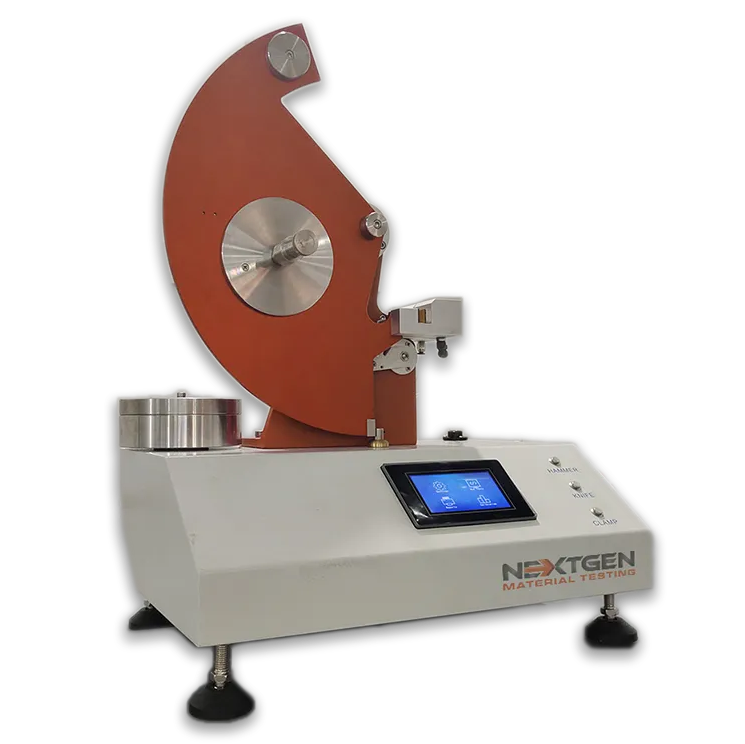
GenElm Series Elmendorf Tearing Tester – 64N and 128N Models
The GenElm Series Elmendorf Tearing Tester is designed for precise measurement of tear strength in fabrics, plastic films, paper, nonwovens, and technical textiles. Available in 64 N and 128 N models, it complies with ASTM, ISO, and DIN standards to provide accurate and comparable results across laboratories. The system features a touch-screen interface, pneumatic clamping, automatic specimen cutting, and data export via RS232, combining usability with consistent performance.
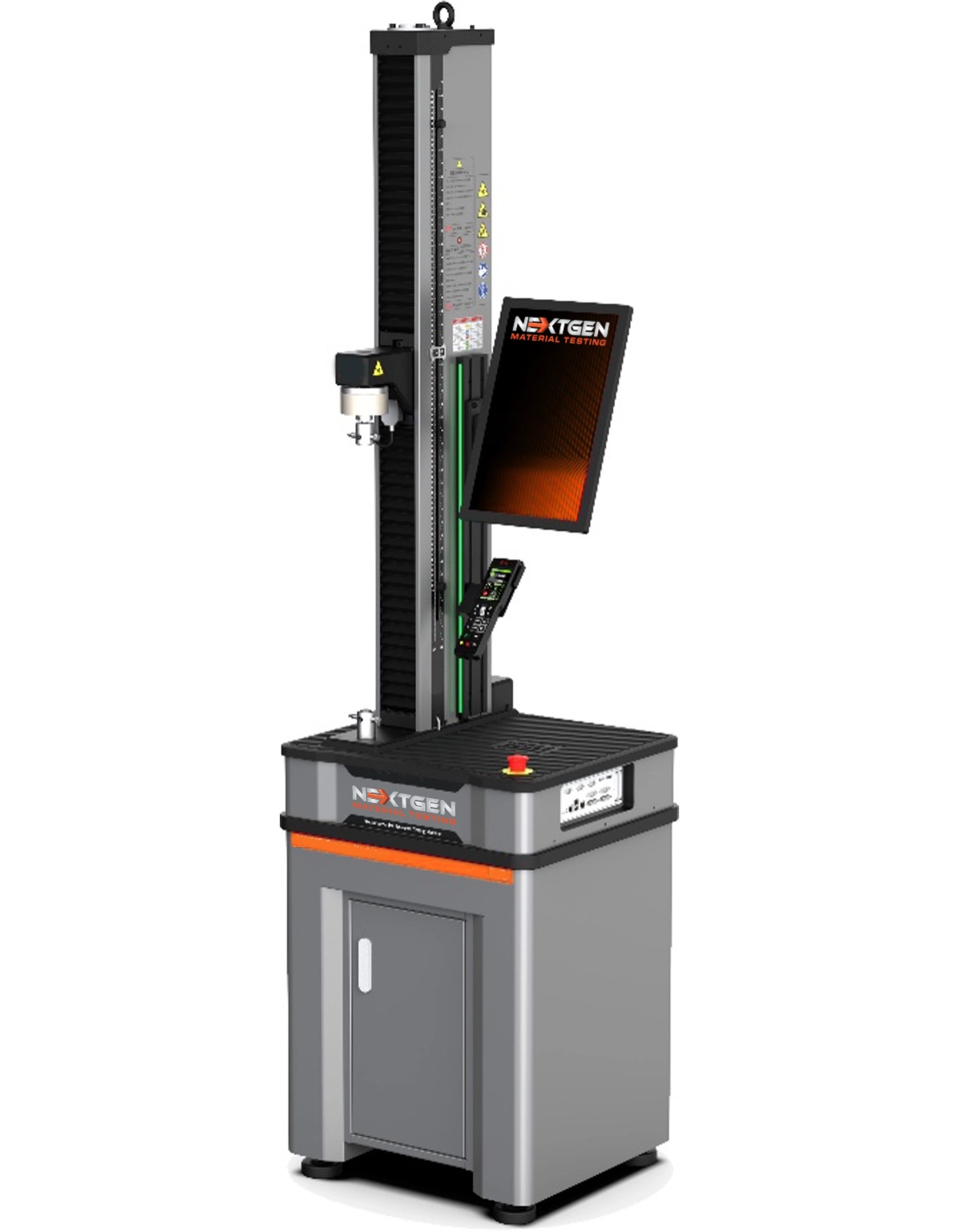
NG-EML Series A – Single Column Bench Top Universal Testing Machine (50 N – 5 kN)
The NG-EML Series A – Single Column Bench Top UTM (50 N–5 kN) is a precision electromechanical system designed for tension, compression, and flexural testing of low-force specimens. Featuring GenTest™ software, a high-speed servo drive, Class 0.5 accuracy, and USB/Ethernet control, this compact tabletop unit supports ASTM, ISO, and EN standards. Ideal for testing plastics, rubber, foams, films, composites, and thin metals.
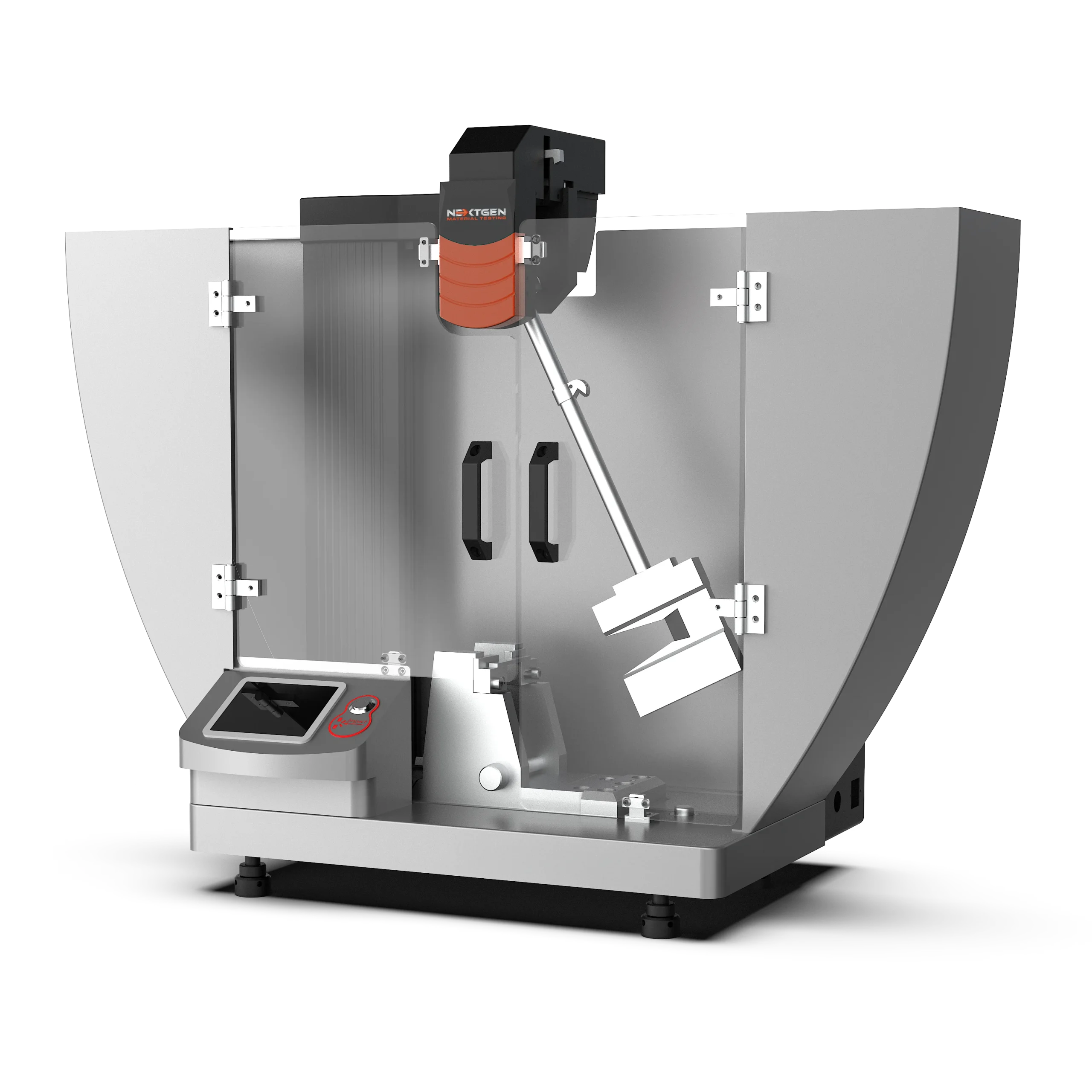
Class J - Charpy and Izod Automatic Impact Testing System - 1J - 50J
Class J is widely used for lzod and Charpy impact test on softer metals, plastics and rubber specimens. Equipped with tensile impact pendulum and fixtures, it can carry on tests on plastic film and sheet. The newly enhanced design offers the most cost-effective configuration to address Charpy test from 1J to 50J (0.7 - 37 ft/lbs), and lzod test from 1J to 22J (0.7 - 16 ft/lbs).

Melt Flow Indexer
Our melt flow indexer is a highly precise instrument designed for the measurement of melt flow rate (MFR)/(MI) or melt volume rate (MVR) in quality control and research applications.
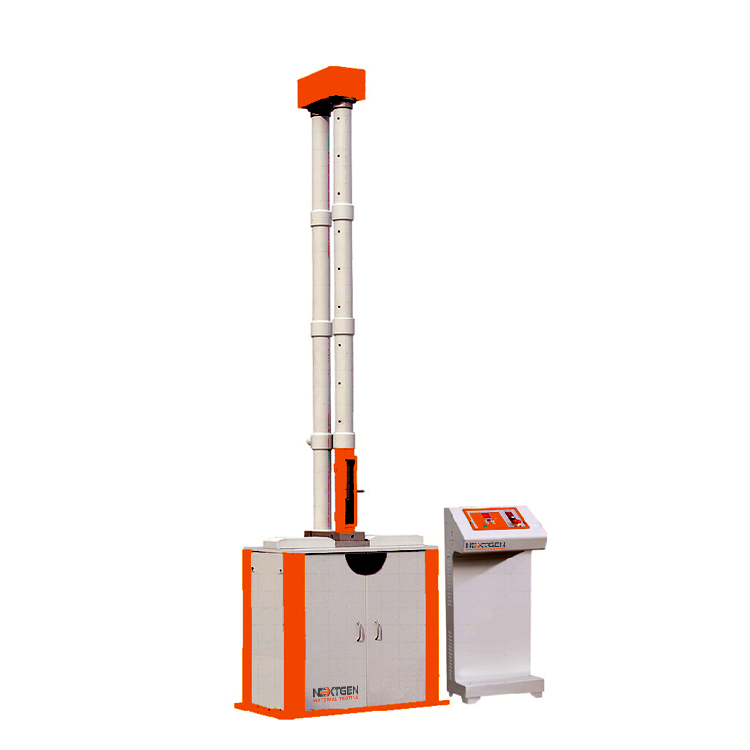
NG-ImpactFall – Falling Weight Impact Tester
Our falling weight impact tester finds extensive application in conducting external impact strength tests on plastic and non-metal materials.
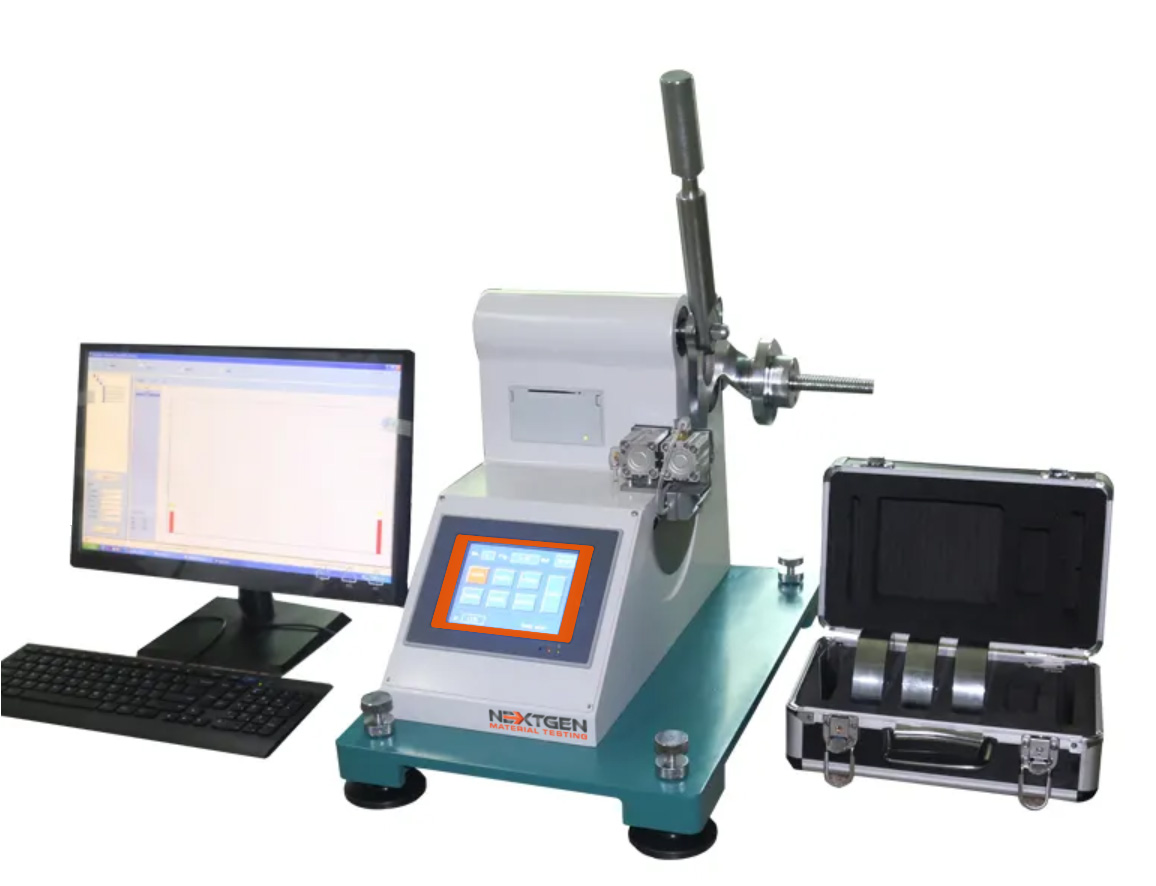
High Energy Elemendorf
Measure the tearing strength of plastic materials with the NG-HE Elemendorf, a versatile tester with advanced potential energy calculation.
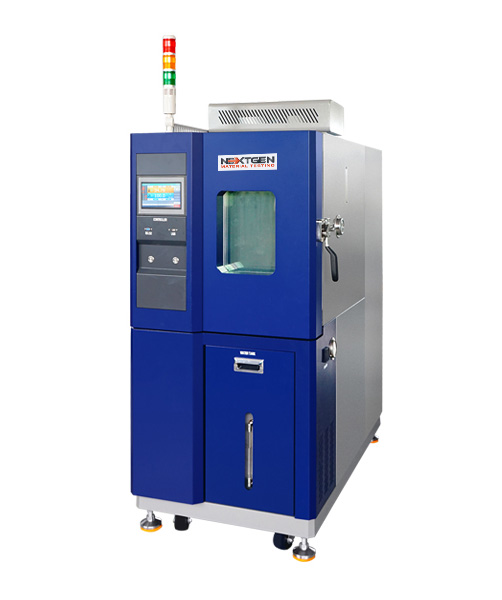
NextGen Environmental Chambers NG-EC 100,150,225,408,1000
The temperature and humidity NextGen Environmental Chambers features a sturdy cabinet made of cold-rolled steel and stainless steel.
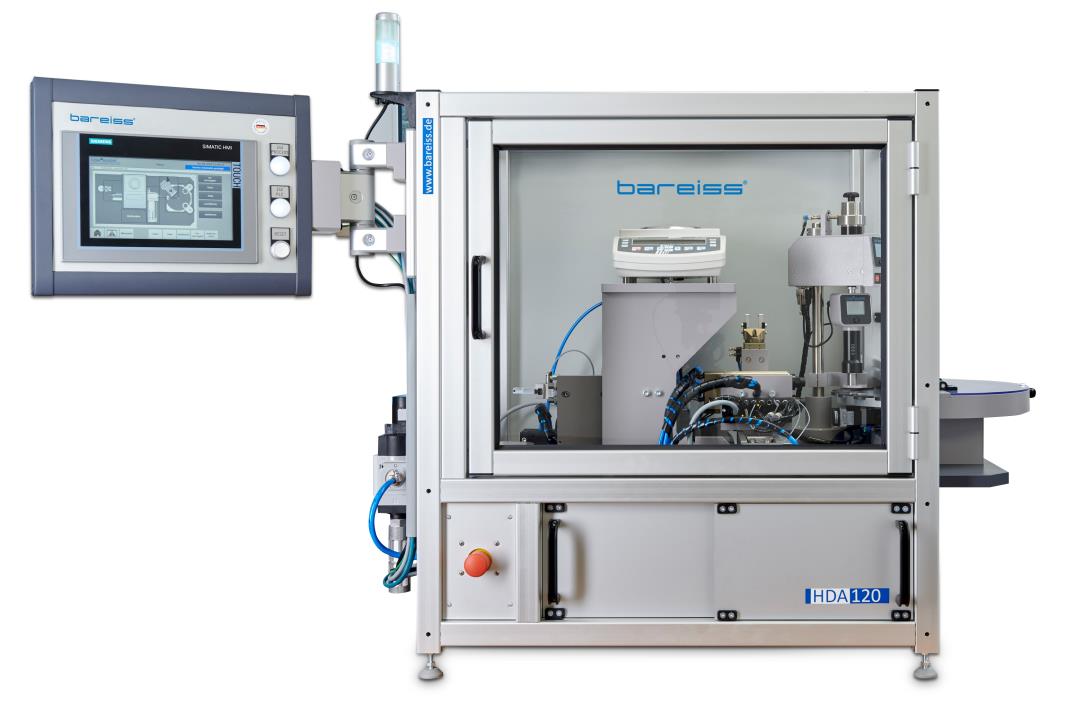
HDA 120 - Hardness and Density Automation Test System
The HDA 120 test system is a versatile solution for semi-automatic detection of sample hardness and density.
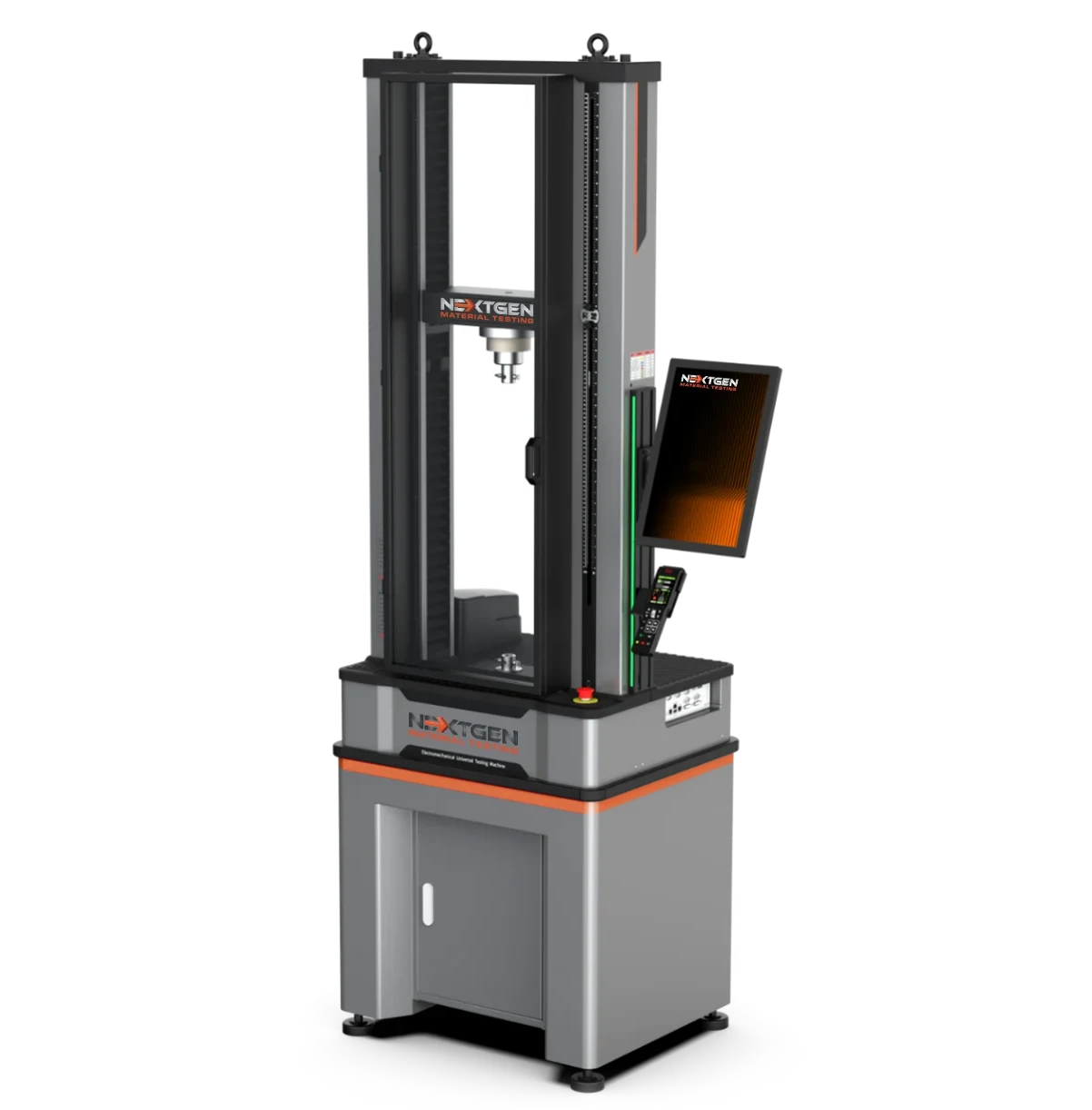
NG-EML Series B – Dual Column Bench Top Universal Testing Machine (100 N – 10 kN)
The NG-EML Series B is a high-precision dual-column benchtop universal testing machine engineered for tensile, compression, and flexural testing in the 0.1 kN to 10 kN range. It features Class 0.5 accuracy, a rigid FEM-optimized frame, and a direct-drive servo system with advanced closed-loop control, making it ideal for testing rubber, plastics, metals, composites, and high-performance polymers in both R&D and quality assurance settings.
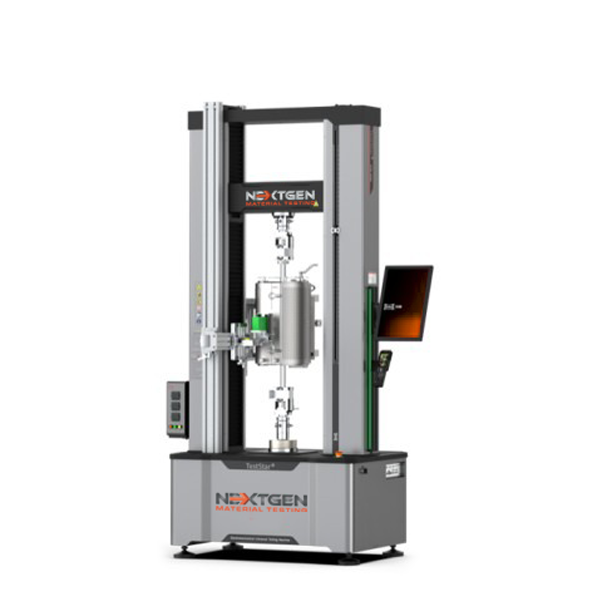
NG-EML Series C – Dual Column Bench Top and Floor Standing Universal Testing Machine (5 kN – 50 kN)
The NG-EML Series C is a precision-engineered dual-column universal testing machine for tension, compression, and flexural testing of metals, composites, rubbers, and polymers. Available in both bench-top and floor-standing formats, with force capacities from 5 kN to 50 kN and Class 0.5 accuracy.
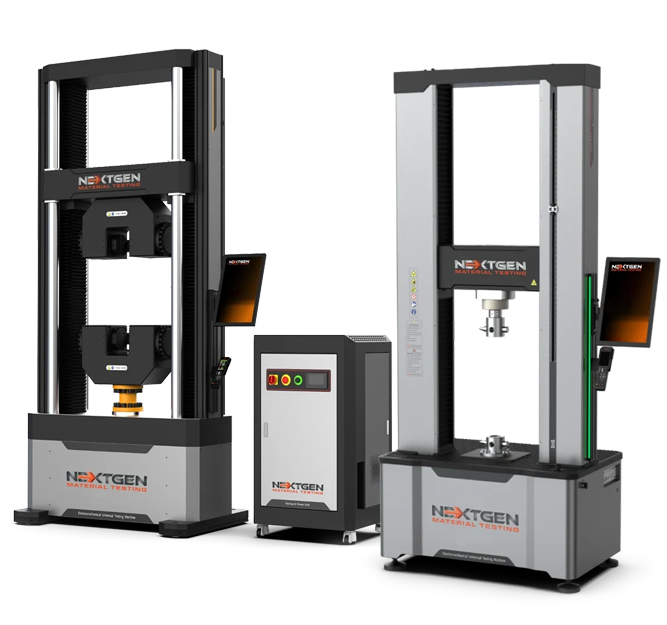
NG-EML Series D – Floor Standing Universal Testing Machine (50 kN – 1000 kN)
The NG-EML Series D – Floor Standing Universal Testing Machine (50 kN–1000 kN) is a dual-column system for tensile, compression, flexural, shear, and cyclic testing of high-strength metals, composites, polymers, and advanced materials. Available in single-space and dual-space configurations, it meets ASTM E8, ISO 6892-1, ISO 527, and GB/T 228 standards. With closed-loop control, 1200 Hz sampling, ultra-low speeds (0.00005 mm/min), and waveform generation, it is ideal for aerospace, automotive, construction, and research labs.
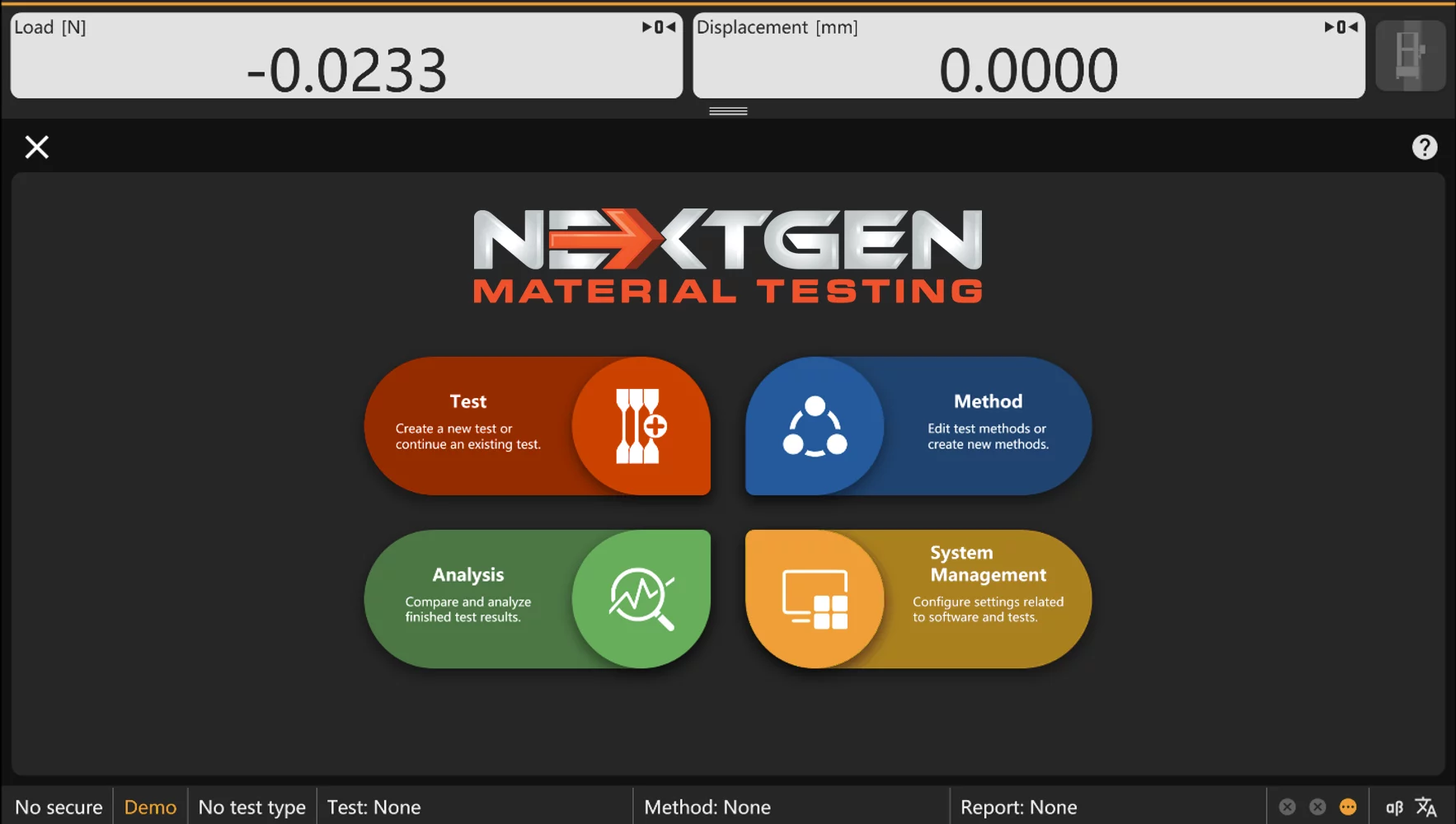
GenTest – Advanced UTM Testing Software
GenTest Software provides test control and data acquisition for universal testing machine workflows used in quality control and materials testing. It combines method templates, step-based sequencing, live curve monitoring, and built-in calculations in one environment. The software supports standards-based testing programs aligned with ASTM, ISO, DIN, EN, and BS. Results and reports remain linked to the method and specimen inputs for consistent review, auditing, and customer documentation.
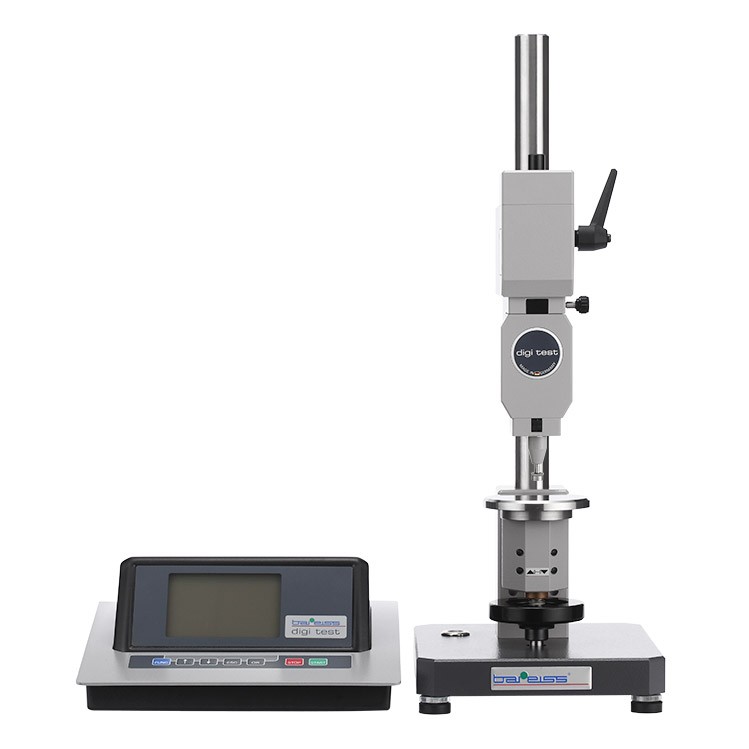
Automatic Shore, IRHD and VLRH Hardness Testing System
NextGen is proud to present our German line of fully-automatic Shore, IRHD and VLRH hardness testing system for plastic materials, plastic and foam compounds for the ultimate precision, accuracy and repeatability, exceptional ease-of-use and maintenance. Experience the industry leader for specimen testing including rubbers, plastics, foams, composites, o-rings, and more.
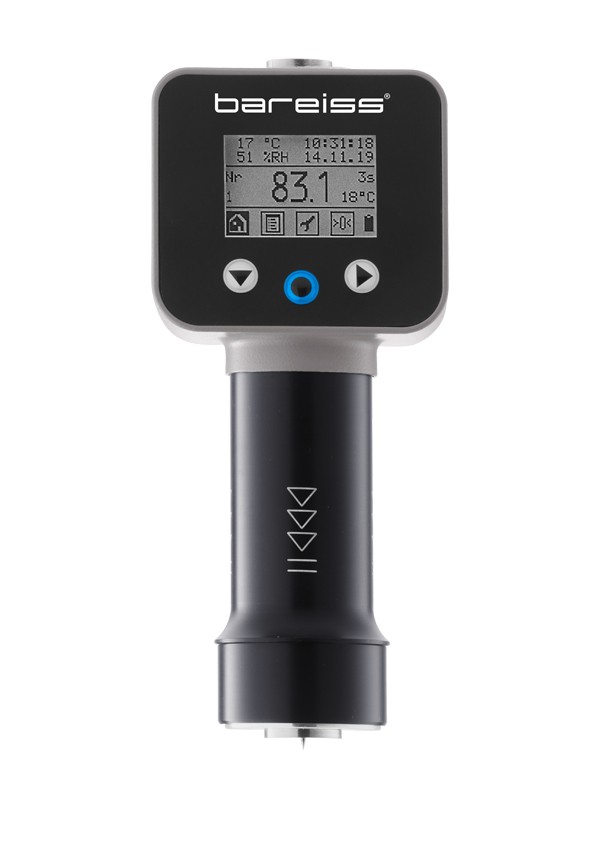
Advanced Portable Shore Durometer System with Test Stand Options
HPEIII is NextGen's advanced German line of equipment that is the new generation of HPE systems ideal for various plastic and plastic compound testing. The new system enhancements offer advantages including temperature sensor, reading values of ambient temperature and humidity, historical hardness value display, larger LCD display, standard USB connection and much more. These advanced portable systems can be paired up with either manual or automatic motorized test stands to help eliminate the human error factor and maximize accuracy and repeatability between test when switching from one operator to the next.
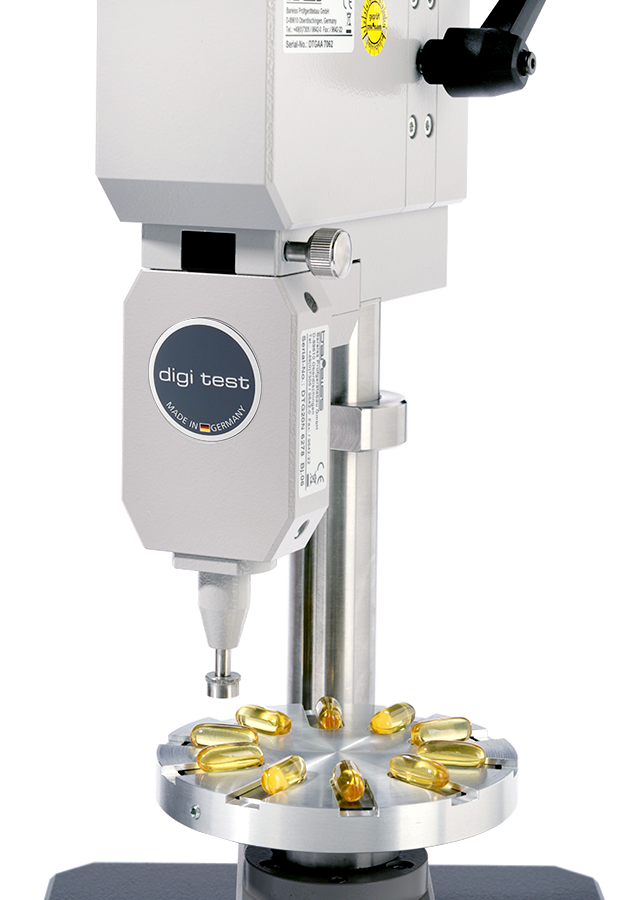
Automatic Capsule and Soft Gel Hardness Tester
Gelomat is an automatic capsule hardness tester designed for regular and soft gel capsule testing. This state of the art system is developed by the latest R&D technology to meet and exceed the highest quality standards for gelatin capsule testing. The system comes standard with your desired testing head and can be upgraded to optional accessories for maximum efficiency.
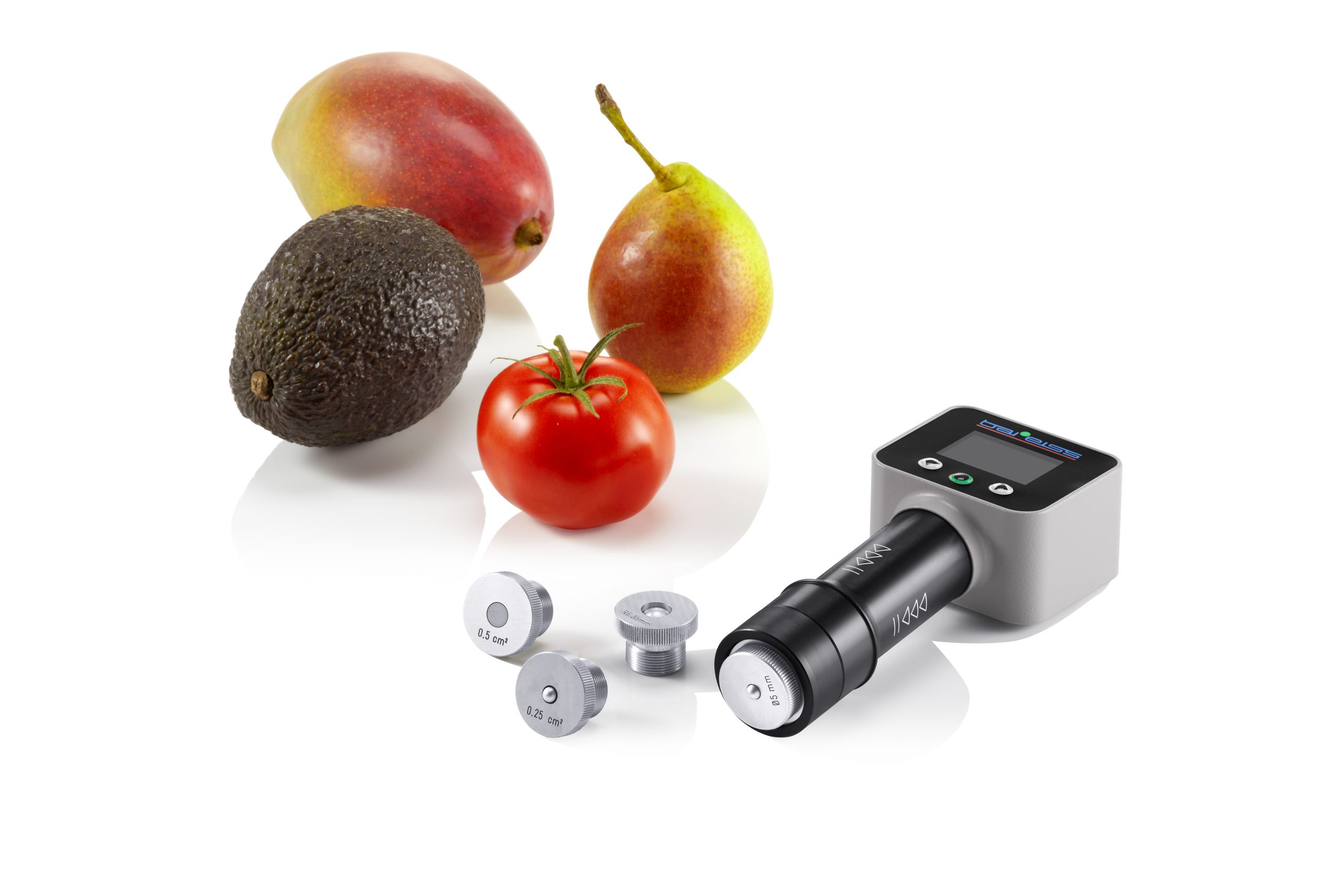
Fruit Firmness Tester
This German manufactured fruit firmness and fruit hardness testing device is designed specification for the determination of the pulp hardness of a given fruit. This state-of-the-art device is invaluable for trading companies serious about their quality control procedures. The unit helps identify the harvest date of the specific fruits relative to the time of transpirations and storage.
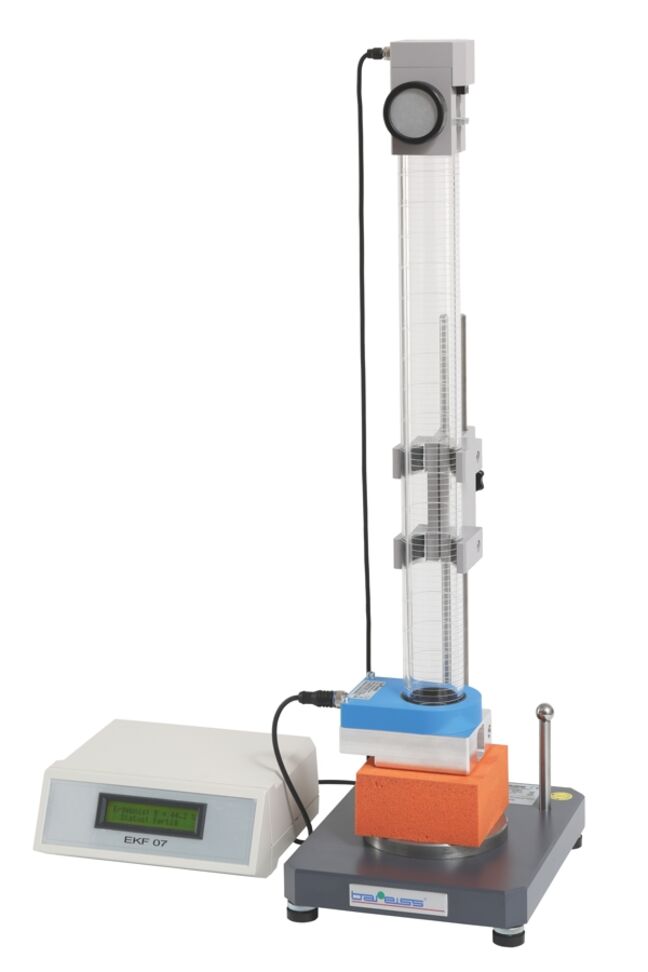
Ball Rebound Tester
Ball Rebound Tester is designed for measuring the rebound resilience of polymer foams.
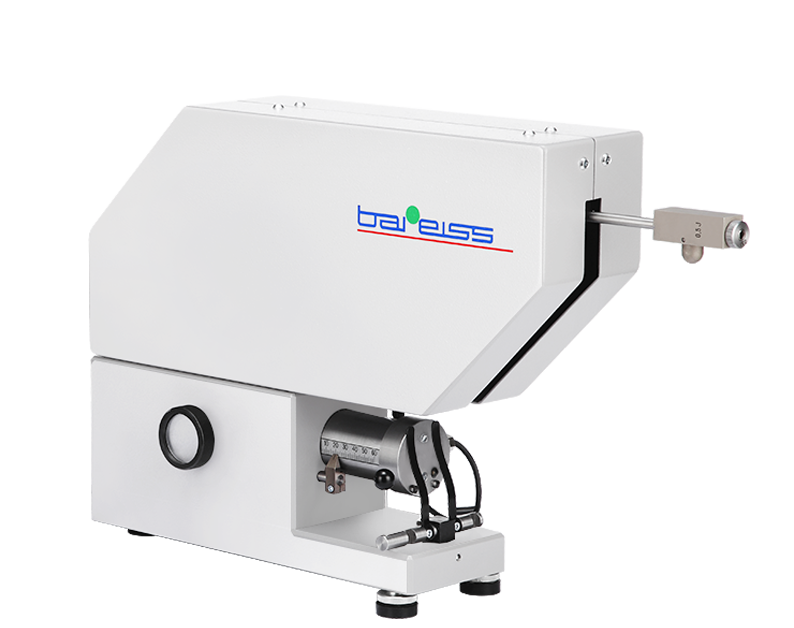
Pendulum Rebound Resilience Tester
Manual and Fully-Automatic Pendulum Rebound Resilience Tester. These rebound testers will determine the dynamic behavior of various materials and supply the differentiation of these materials' qualities. It will also identify material changes after aging and fatigue. The Pendulum Rebound Tester is out there with an adjustable heater for sample temperatures up to 100 ℃. It can simulate the effect of heat on the elasticity of samples with different formulations.
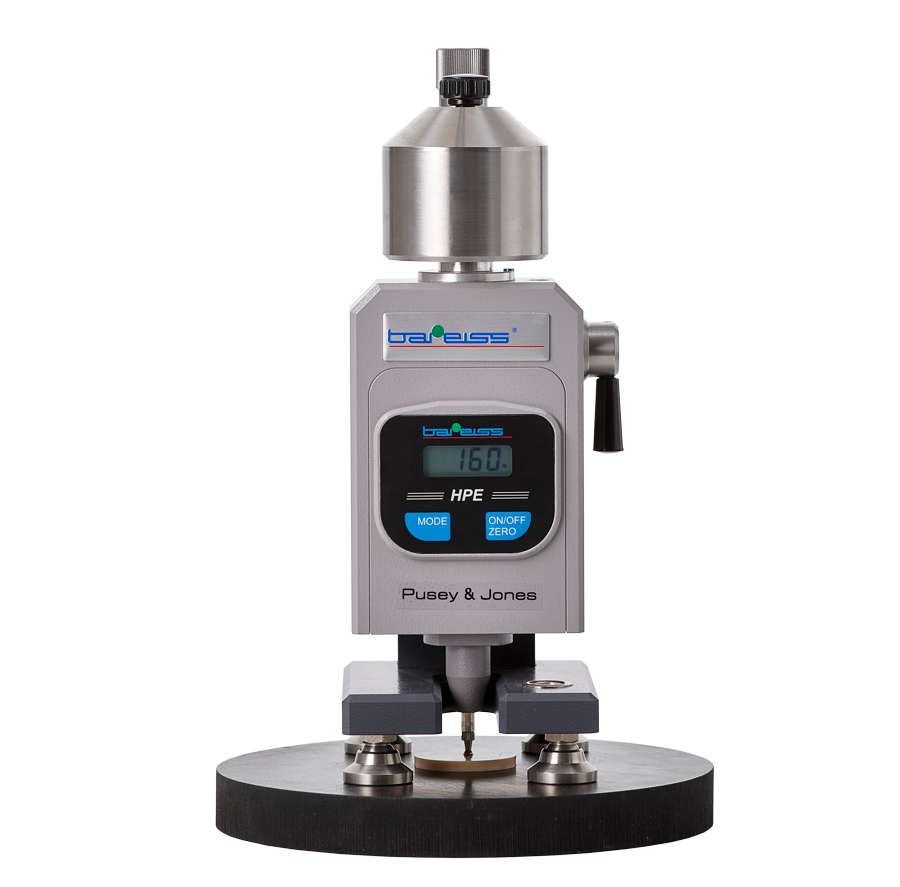
Pusey & Jones Tester
Pusey & Jones is a rubber and rubber like material testing system. The unit is designed for testing rubber rollers in the paper industry. The system can test specimens with flat surfaces and thickness of 13 mm.
